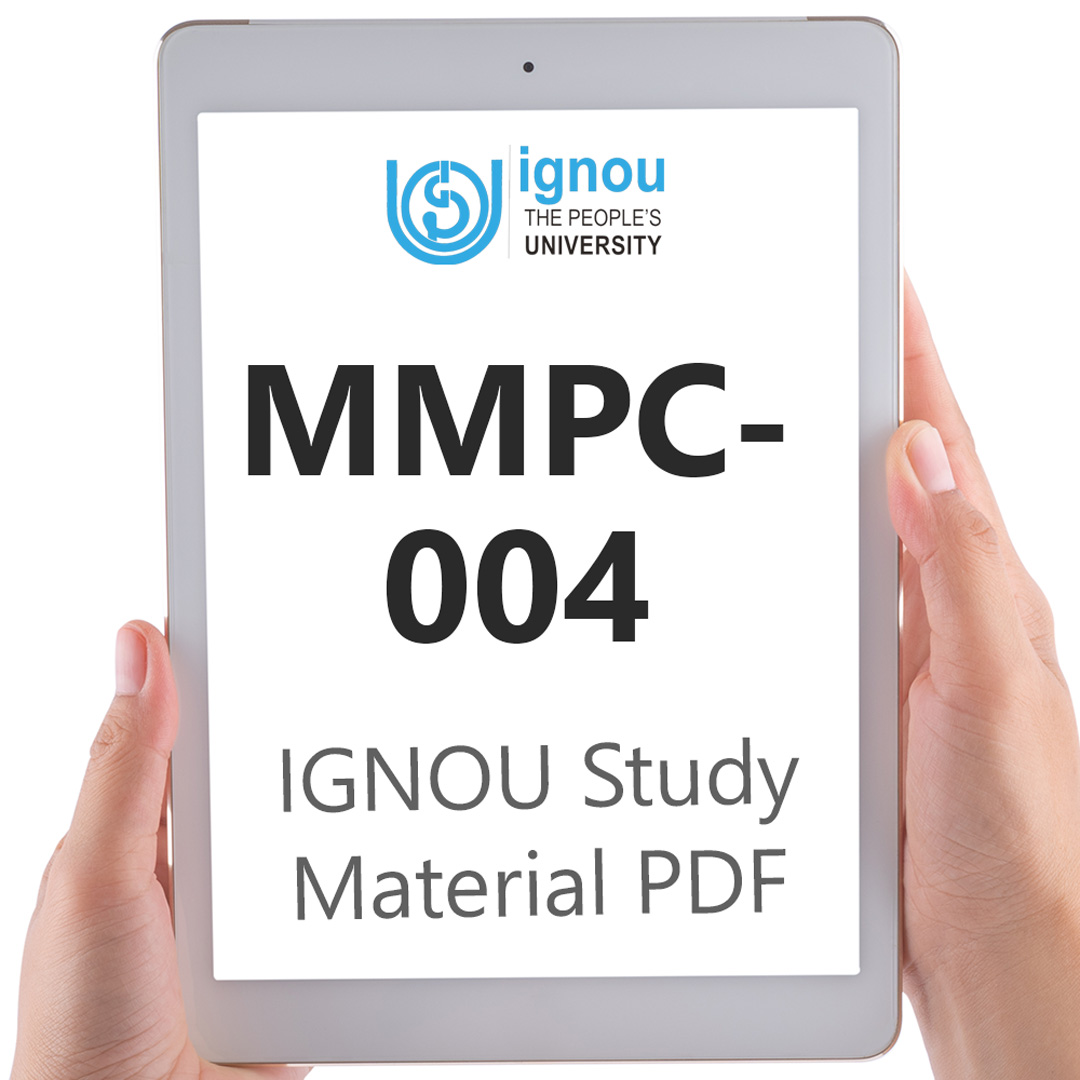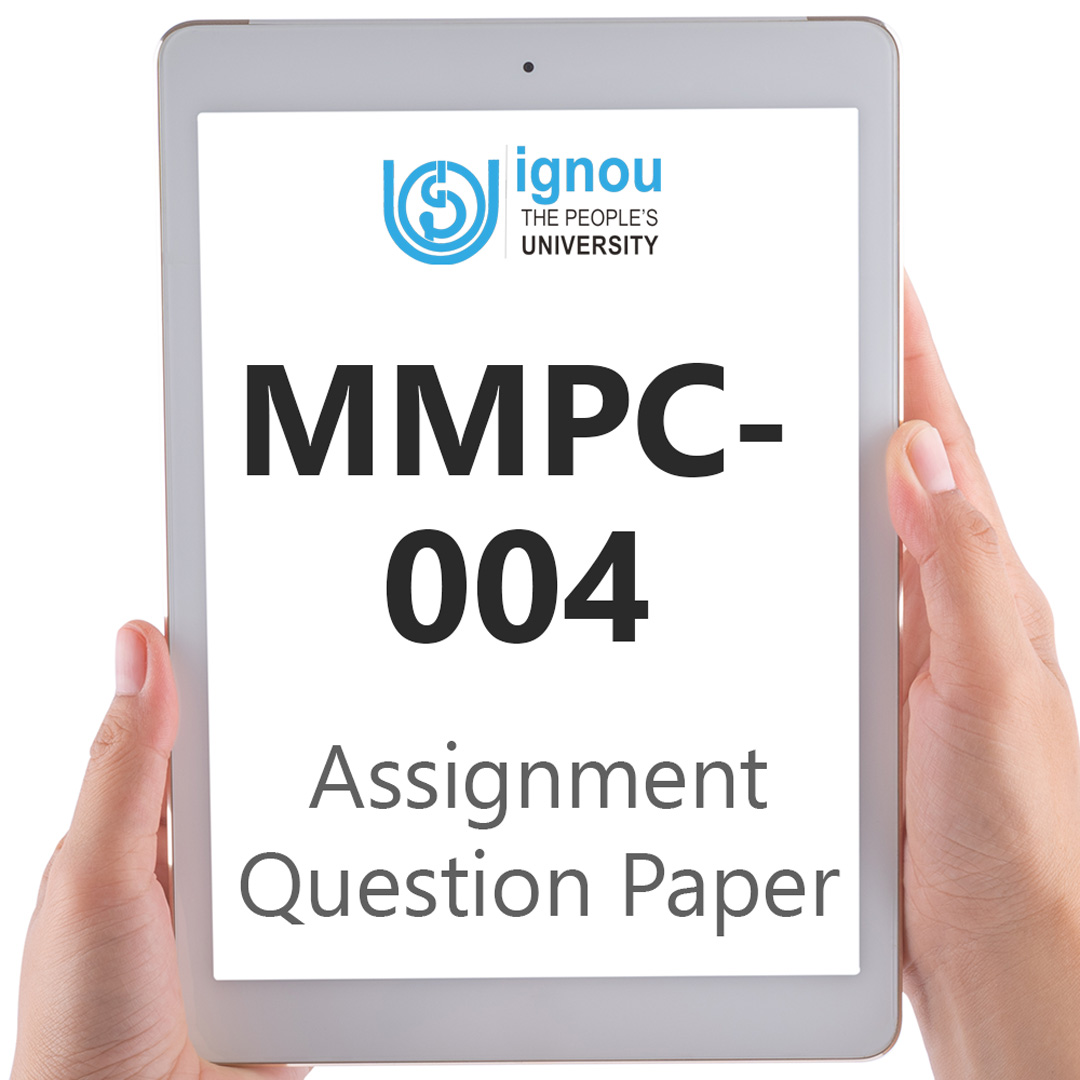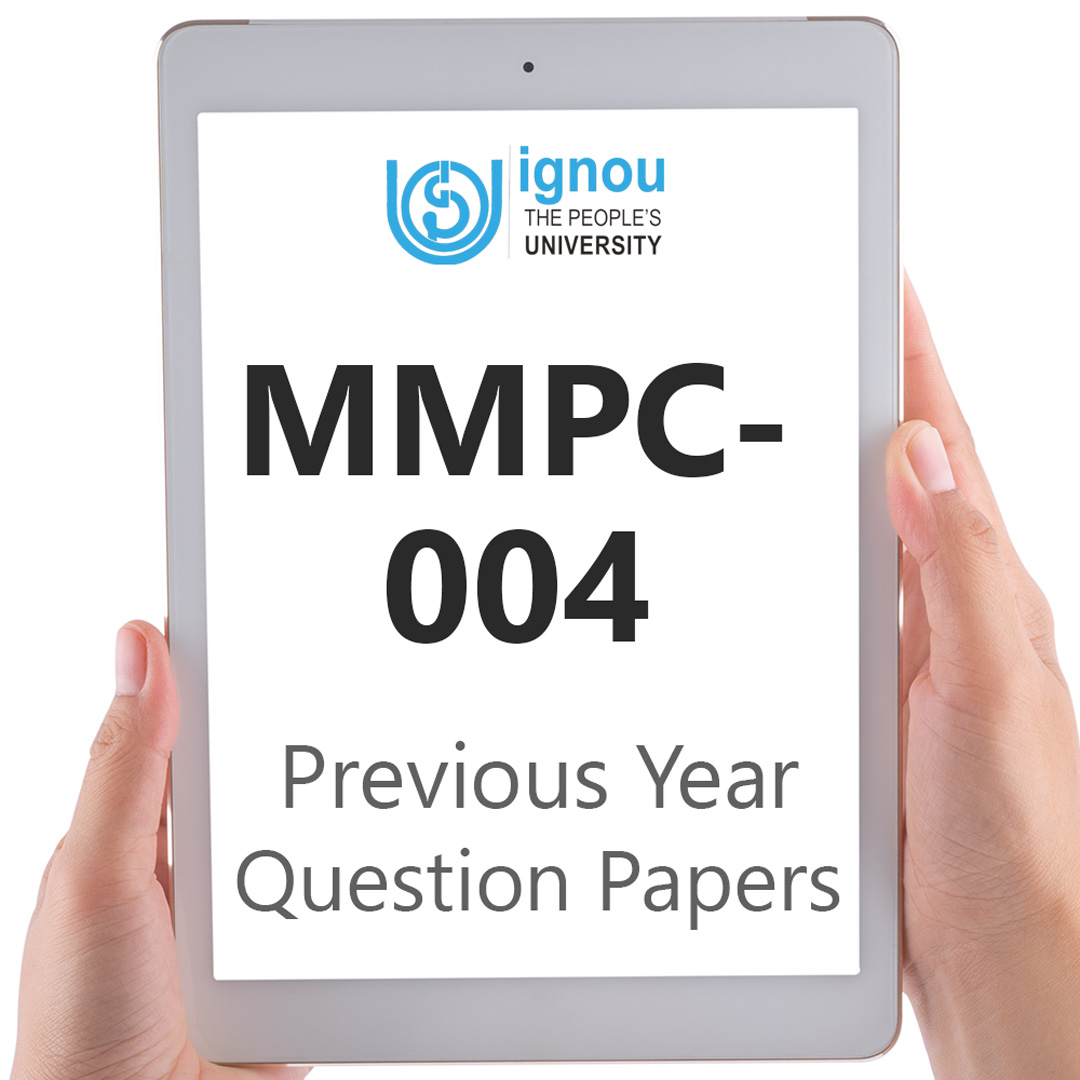If you are looking for MMPC-004 IGNOU Solved Assignment solution for the subject Accounting for Managers, you have come to the right place. MMPC-004 solution on this page applies to 2022-23 session students studying in MBA, MBF, MBAFM, MBAHM, MBAMM, MBAOM, PGDIFM courses of IGNOU.
MMPC-004 Solved Assignment Solution by Gyaniversity
Assignment Code: MMPC-004/TMA/JULY/2022
Course Code: MMPC-004
Assignment Name: Accounting for Managers
Year: 2022-2023
Verification Status: Verified by Professor
1. Explain the following accounting concepts
(a) Business Entity concept
Ans) The business entity concept states that the transactions associated with a business must be separately recorded from those of its owners or other businesses. Doing so requires the use of separate accounting records for the organization that completely exclude the assets and liabilities of any other entity or the owner. Without this concept, the records of multiple entities would be intermingled, making it quite difficult to discern the financial or taxable results of a single business. Here are several examples of the business entity concept:
A business issues a $1,000 distribution to its sole shareholder. This is a reduction in equity in the records of the business, and $1,000 of taxable income to the shareholder.
The owner of a company personally acquires an office building, and rents space in it to his company at $5,000 per month. This rent expenditure is a valid expense to the company and is taxable income to the owner.
The owner of a business loans $100,000 to his company. This is recorded by the company as a liability, and by the owner as a loan receivable.
There are many types of business entities, such as sole proprietorships, partnerships, corporations, and government entities.
There are a number of reasons for the business entity concept, including the need to separately track taxes, financial performance, and financial position for each entity. It is also useful for when an organization is liquidated, to determine the amounts of payouts to the various owners. Further, the business entity concept is needed from a liability perspective, to ascertain the assets available in the event of a legal judgment against a business entity. And finally, it is not possible to audit the records of a business if the records have been combined with those of other entities and/or individuals.
(b) Money measurement concept
Ans) The money measurement concept says that an accounting transaction should only be recorded if it can be expressed in terms of money. This means that accounting transactions are more focused on numbers than on words. So, a lot of things don't get recorded in a company's accounting records, so they don't show up in its financial statements. Some things that can't be counted as accounting transactions because they can't be put into monetary terms are:
Employee skill level
Employee working conditions
Expected resale value of a patent
Value of an in-house brand
Product durability
The quality of customer support or field service
The efficiency of administrative processes
All of the above things affect either a business's income, expenses, assets, or debts, so they all have an effect on the business's financial results. For example, if the customer service is good, customers are more likely to stick with the company and buy from it again, which affects the company's revenue. Or, if employees don't like where they work, they will leave more often, which will increase costs related to labour.
The main problem with the money measurement concept is that, as we just saw, many things can cause long-term changes in a business's financial results or financial position, but the concept doesn't let these things be shown in the financial statements. The only exception would be if management talked about important things in the disclosures that go with the financial statements. So, it is possible that the most important advantages of a business are not shown. This tends to understate a business's ability to make money in the long run. Most of the time, the opposite is not true, since accounting standards encourage management to list all current or possible liabilities in the notes that go with the financial statements. In short, the idea of measuring money can lead to the release of financial statements that might not show the future upside of a business as well as they could. But if this idea didn't exist, managers could add intangible assets to the financial statements that don't have much of a reason to be there.
(c) Continuity concept
Ans) Accounting assumes that the business will be around for a long time, unless there is strong evidence to the contrary. The business seems to be a going concern, which means that it will keep running at least for the near future. The owners have no reason to shut down or sell the business, and they don't have to.
This is a very important assumption, because it means that the business is seen as a way to add value to the resources it uses. The business's success can be measured by the difference between its output values, such as sales or income, and its input values, such as costs. So, according to the continuity concept, all resources that aren't being used can be reported at their cost instead of their market value, so they don't have to be sold on the market.
A lot of valuations and allocations in accounting are based on the assumption that the business will not be sold in the near future. For example, the way depreciation or amortisation work is based on this idea. This is the assumption that investors use to decide whether or not to put money into a business. The idea is that the business unit for which the accounting functions are being done should expect that business will keep going as usual. Only if this assumption is true can the accounting process stay stable and reach its goal of accurately recording and reporting on the capital invested, the position of the business, and how well management is working as a going concern. In this accounting assumption, neither liquidation values nor higher market values at the moment are very important. This assumption is where the use of cost in accounting for assets comes from.
But if the accountant has good reason to think that the business or a part of it is going to be liquidated or that it will stop operating as usual in a year or two, then the assets could be reported at their current or liquidation values.
(d) Accrual concept
Ans) The accrual concept makes a difference between getting money and having the right to get it. It also makes a difference between getting money and having to pay it. In real business, the obligation to pay and the movement of cash may not happen at the same time. The accrual idea takes into account this difference. Getting money from the sale of goods is possible.
before the right to receive arises, or
after the right to receive has been created.
The accrual concept tells the accountant how to deal with cash receipts and the rights that come with them. In the first case, the receipt won't be counted as income for the period because the right to receive it hasn't come up yet. In the second case, the income will be counted even though the money won't be received until a later time.
The same thing would be done with the company's expenses. Costs can be paid for with cash either before or after they are due. Only amounts that are due and have to be paid would be counted as expenses. If a payment is made ahead of time, it won't be counted as an expense because it wasn't made during the accounting period in question. Instead, the person who got the cash will be counted as a debtor until his right to get the cash has come due. During the accounting period, if an expense was made but no payment was made, the expense must be recorded and the person who should have been paid is shown as a creditor.
2. Explain the following
(a) Marginal Costing
Ans) The Marginal Costing method is better than the Absorption Costing method in every way. With this method, only the variable costs are used to figure out how much a product costs, while fixed costs are taken out of the income for the period. Contribution under Marginal Costing is the term for the money made when sales are higher than variable costs.
Features of marginal costing are as follows:
The goal of marginal costing is to find out how variable costs affect the amount of production or output.
Break-even analysis is an important part of marginal costing and is a part of it in its own right.
To figure out how profitable a product or department is, you need to know how much each one contributed.
The selling price is equal to the sum of the contribution plus the variable costs and the profit.
The value of finished goods and work in progress is based on their marginal costs.
Fixed costs are paid for by contributions, and variable costs are added to the cost of production.
Only fixed costs and variable costs can be used to divide costs. Semi-fixed prices can also be turned into either fixed costs or costs that change over time.
(b) Activity Based Costing
Ans) Activity-Based Costing (ABC) is a way to figure out how much something costs. First, costs are linked to activities, and then they are linked to products. This costing system is based on the idea that the costs that are incurred are caused by the activities. As was already said, costs are put on products based on how they are used for each activity.
Features of Activity Based Costing are as follows:
ABC is a modern way to figure out how to divide up indirect costs. Costs given to each activity show how many resources that activity uses.
As with traditional costing, ABC is not limited to giving indirect costs to different departments. It goes on to say that the lowest unit for figuring out how to divide up indirect costs is the individual activity.
Resources are given to each activity and cost object based on how much they use.
ABC finds the activities by using the activity cost drivers. This makes the cost calculation more accurate.
This method makes it easy to find costs based on the activities that caused them.
This method of figuring out costs works well if the manufacturing line makes more than one product and overhead costs make up a big part of the total cost.
This method makes a clear link between different resources and what happens as a result.
3. What is CVP analysis? Does it differ from break even analysis? How is break-even point calculated?
Ans) The Cost-Volume-Profit (CVP) analysis tries to figure out how changes in volume, costs, prices, and the mix of products affect profits. We'll be able to see that even though these factors are all connected, each one is also affected by a number of internal and external factors. For example, costs can change based on the type of plant chosen, the size of the business, the technology used, how well the workers do their jobs, and how well the business is run.
A break-even analysis is a financial calculation that compares the costs of a new business, service, or product to the price per unit. This helps you figure out when you will make enough money to cover your costs. In other words, it shows you when you'll have sold enough units to pay for everything. At that point, you won't have made or lost any money.
To calculate the break-even amount, we divide the Total Fixed Costs over the Contribution Margin ratio:
Break Even Amount = Total Fixed Costs / Contribution Margin Ratio
Another way to calculate the break-even amount is as follows:
Break Even Amount = Total Variable Costs + Total Fixed Costs
To calculate the quantity of the break-even point, we use the following formula:
Break Even Amount = Total Fixed Costs / Contribution Margin Ratio
Another way to calculate the break-even point in units is to look at the break-even equation:
Selling Price x Q = Variable Costs x Q + Fixed Costs
By solving the equation for Q, we can find the break-even point in volume of units.
4. Explain in detail the various contents of an Annual Report.
Ans) The various contents of an Annual Report are:
General Corporate Information: The general corporate information section provides an overview of what the company makes and sells, where it does business, the number of employees, the number of locations, and other information that gives readers a big-picture idea of what the company does and where it operates.
Operating and Financial Review Statement: In the operating and financial review (OFR) statement, the company provides forward-looking statements about the potential financial performance of the business, based on the views of the company’s management. It discusses potential risks to and opportunities for the business. In addition to listing risks, the OFR should provide specific outcomes that might occur if these events happen.
Chairperson’s Statement: The chairperson’s statement is another general report that provides an overview of the company’s financial condition, according to IGI Global. The chairperson provides a review of what the board has worked on the past year, their views of the company’s current condition, and thoughts on the business’s possible future performance. Unlike the OFR statement, this report is signed by a company officer, who is responsible for the truth of the content.
Chief Executive Officer’s Report: The CEO’s report outlines bottom-line numbers about the company’s performance, but without all the detail that comes later in the financial statements, explains CEO Hangout. The CEO discusses any changes the company went through, whether they were new internal initiatives or external factors, such as changes in the labor market, economy or global supply chain. The report includes potential problems and threats and discusses how the company is planning for them. Like the chairman’s statement, the CEO’s report is signed.
Auditor's Report: To provide more reassurance to shareholders and potential investors, companies include the findings of an independent auditor or audit firm to confirm that the numbers supplied in the report are legitimate. The auditor or firm is identified.
Corporate Governance Information: Diligent Insight describes the corporate governance information section of an annual report as information about the key executives at the business and how they are empowered to run it. It often includes an explanation of the roles of the management staff and board of directors and the procedures for electing and removing officers. It might include key employees’ salaries and benefits, including how much stock they receive.
Key Financial Statements: Every annual report provides detailed financial numbers readers can get by looking at the company’s balance sheet (or statement of financial position), income statement (also known as a profit-and-loss statement), statement of changes in equity, and a cash flow statement. This section includes notes to explain or support the information.
Company Accounting Policies: The company accounting policies section explains how the company keeps its books and handles its reporting. If the company uses an external CPA firm, this part of the report identifies the company.
5. From the following calculate cash from operations:
Profit and Loss Account for the year ended 31st March, 2022






